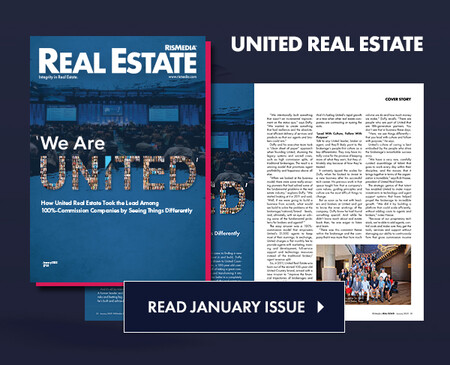Inflation has been a major talking point in the housing market as of late, with the Federal Reserve recently announcing a halt in rate hikes due to cooling inflation levels. While inflation may be slowing down, prices in the rental market have outpaced its growth, according to a new report from Clever.
According to Clever’s new research, since 1985, rent prices have increased 208%, while inflation has climbed 149%. The report found that if rent prices grew at the same rate as inflation, the median rent would cost 19% less—$939 a month instead of $1,163.
Key highlights:
- From 2009 to 2021, the median monthly rent price in the U.S. climbed 42% from $817 to $1,163.
- Rent exceeded inflation by 40% in 2021, the last full year for which data is available.
- Inflation has exceeded income for 22 consecutive months, but historically, income has outpaced inflation by about 31% since 1985.
- Americans’ incomes have leapt significantly since then—growing 194% from $18,700 in 1985 to $55,000 in 2021—compared to inflation’s 149% growth.
- Americans may have more money to spend on housing, but wage gains haven’t kept pace with rent price growth in the long or short term. From 2020 to 2021, rent jumped 6%, while wages grew 4.5%.
- From 2009 to 2021, rent outpaced income growth in 46 of the 50 most-populous metros. Rent increased by at least 60% in seven cities in this 12-year span: San Jose, California (85%); Denver, Colorado (82%); Seattle, Washington (81%); Portland, Oregon (72%); San Francisco, California (71%); Nashville, Tennessee (62%); Austin, Texas (60%).
- Rent eclipsed income most frequently in high-demand markets. In Charlotte, where rent outpaced income at the third-highest rate, the population has grown 2,446% since 2009—the most of any city studied.
- Six cities experienced rent increases of 9% or more in the past year alone: Louisville, Kentucky (10%); Cincinnati, Ohio (9.9%); Indianapolis, Indiana (9.8%); Miami, Florida (9.6%); Buffalo, New York (9.1%); Kansas City, Missouri (9%).
- Since 2009, income has exceeded rent in only four cities: Providence, Rhode Island; Buffalo, New York; Cleveland; and Pittsburgh. These four cities are also the only metros where the rent-to-income ratio declined from 2009 to 2021.
Major takeaway:
“Rent price growth first exceeded inflation in 2001, when a short recession squashed demand and lowered the inflation rate. The gap widened again during the Great Recession of 2008, and a decade of underbuilding spawned today’s affordable housing crisis,” said Jaime Dunaway-Seale, a content writer at Clever Real Estate and author of the report. “The U.S. is short about 600,000 rental units and needs to build 4.3 million more to meet demand by 2035. While inventory remains low, fierce demand for housing will likely keep rent prices elevated for struggling tenants. In the post-pandemic era, rent and inflation have ballooned to near record levels. Although inflation has shown signs of slowing, it’s proven difficult for policymakers to decrease because the apartment shortage is keeping rent prices high.
“Rent prices, as well as other shelter costs, remain one of the primary drivers of inflation because they make up the largest segment of the Consumer Price Index, the most well-known indicator of inflation,” added Dunaway-Seale. “Until rent prices decline, inflation will likely remain at an elevated rate.”
For the full report, click here.












